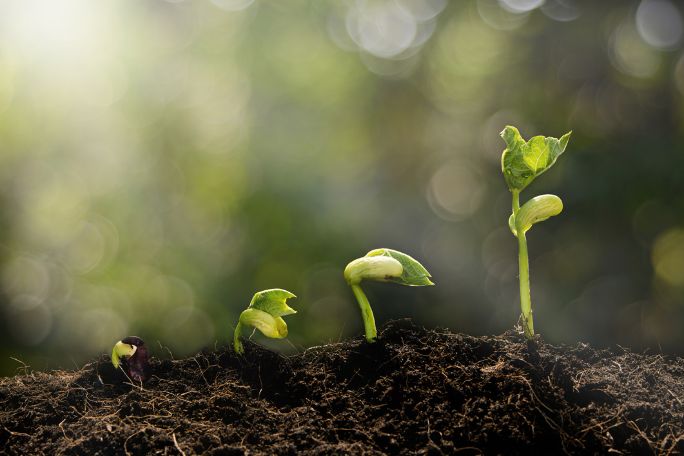Lesson summary
This lesson explores how life began on earth, and how it continued to develop from there. It uses Peppered Moths and Charles Darwin’s finches to explore, simplistically, the concepts of natural selection and evolution. Students conduct an experiment to find the best beak shape for eating certain kinds of food, and how this increases survivability.
Learning intentions:
Students will...
- understand the scientific view of how life began and changed.
Success criteria:
Students can...
- describe the ingredients and Goldilocks Conditions required to produce a new form of complexity - LIFE!
- describe how natural selection and evolution make life more complex.
Lesson guides and printables
Lesson details
21st century skills
- communication
- creativity
- critical thinking
- digital literacy
- global citizenship.
Curriculum mapping
“It is one of the many odd features of modern society, that despite having access to more information than any earlier society, those in modern educational systems … teach about (our) origins in disconnected fragments. We seem incapable of offering a unified account of how things came to be, the way they are.” – David Christian, 2011, Maps of time: an introduction to big history
We encourage you to teach Big History both through and in between disciplines (transdisciplinary).
The story of our universe needs the expertise of academic disciplines to be made sense of and fully explained. The best evidence from various disciplines presents the best answers to our big questions.
As primary educators, this provides us in turn with the opportunity to engage with this story from a particular perspective that your grade and/or school currently requires. This means it is not seen as an add-on/extracurricular activity that our overloaded timetables cannot cope with. English, Science, & Creative Arts syllabuses easily incorporate Big History, alongside the skills and concepts from History and Geography. Maths, too, can be incorporated into discovering large numbers and measuring the large scales of time and space!
Syllabus outcomes: EN2-1A, EN2-2A, EN2-4A, EN2-6B, EN2-7B, EN2-8B, EN2-10C, EN2-11D, EN2-12E, ST2-9PW-ST, ST2-1WS-S,ST2-SPW-ST, HT2-5, GE2-2, GE2-4, VAS2-1,VAS2.4
General capabilities: Literacy, Digital Literacy, Critical and Creative Thinking.
Cross-curriculum priority: Sustainability.
Big History embraces a curriculum that emphasises nature, economics, society and our own well-being to empower children to see our worldview from the context of a unified universe story, not merely from within our local cultural worldview!
Learning our emerging and unified 13.82 billion years of Big History helps us to understand the changing nature and fragility of our complex environment. We can use that knowledge of the past, present and future to investigate future possibilities for sustainable ways to meet our own needs and the needs of future generations.
Resources required
You may decide on different entrances to this story in your classroom. That is perfectly reasonable – as long as we tell the whole emerging story of our universe, as we know it! Think of the story as a chapter book where children need to hear the whole story to make sense of it – if we hear fragments from various chapters we are left with fragments once more!
Alternatively, the resources for this lesson as a standalone are:
- a bell (optional)
- a device capable of presenting a video to the class
- Big History Passport
- Big History Threshold 5 Reflection Page – one per student
- ‘beaks’
- scissors – 6 x pairs
- tweezers – 6 x pairs
- teaspoons – 6 x pairs
- clothes pegs – 6 x pairs
- forks – 6 x pairs (can be plastic picnic utensils)
- knives – 6 x pairs (can be plastic picnic utensils)
- ‘food’
- marbles – 30 odd
- pipe cleaner lengths – 2cms – 30 odd
- toothpicks – 30 odd
- paper clips – 30 odd
- beans, such as large, dried broad beans – 30 odd
- paper squares – 4cmx4cm – 30 odd.
- paper cups or other containers to hold all the different materials.
- Presentation Slides
- timer or stopwatch
- Threshold Cards – Specifically the cards for Thresholds 1, 2, 3, 4 & 5
- Student Worksheet – one per student.
Additional info
This is an original Cool.org lesson.
This Big History Program for primary school students is based on the Big History Project as adapted by Marilyn Ahearn and Marisa Colonna.


Welcome back!
Don't have an account yet?
Log in with:
Create your free Cool.org account.
Many of our resources are free, with an option to upgrade to Cool+ for premium content.
Already have an account?
Sign up with:
By signing up you accept Cool.org's Terms and Conditions(Opens in new tab) and Privacy Policy(Opens in new tab).